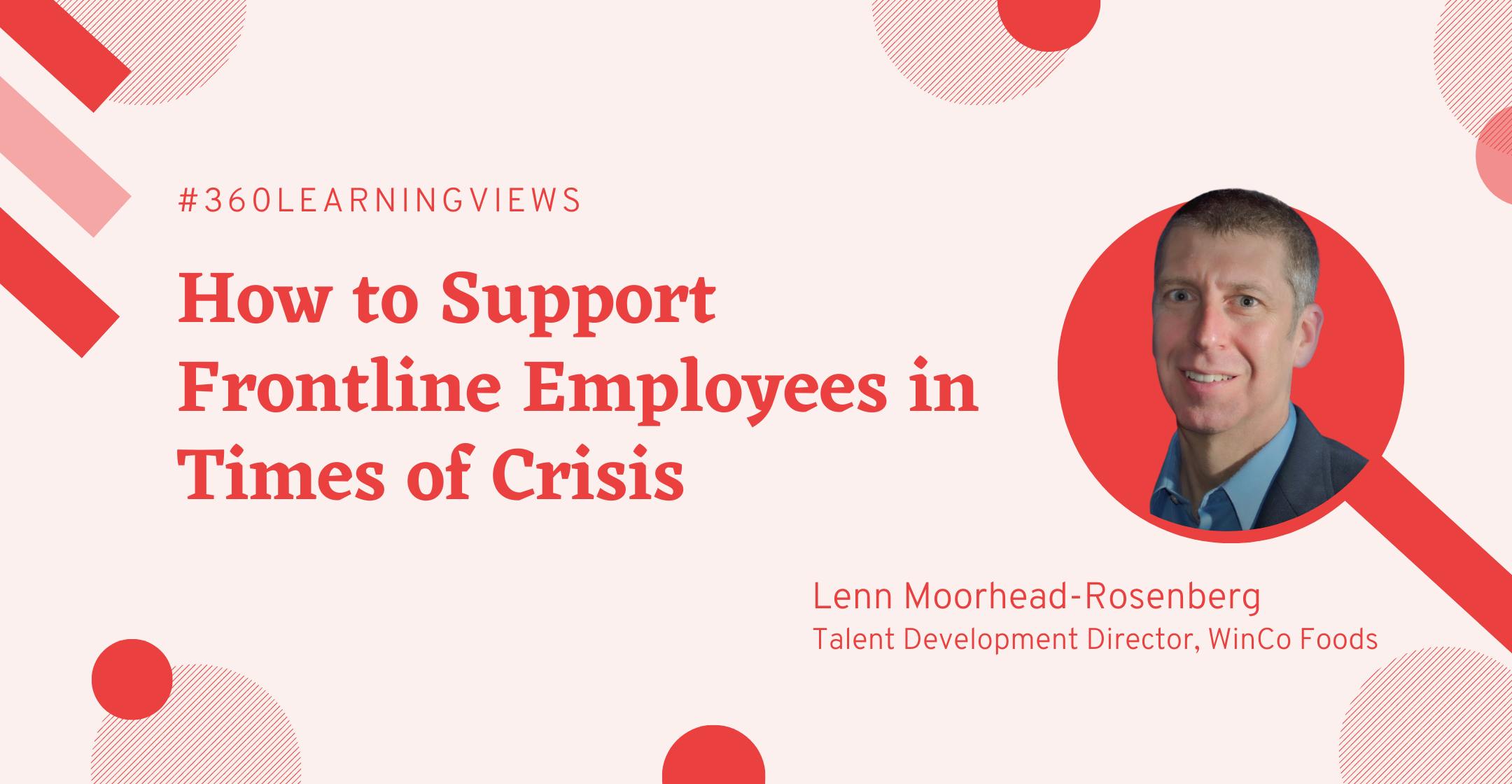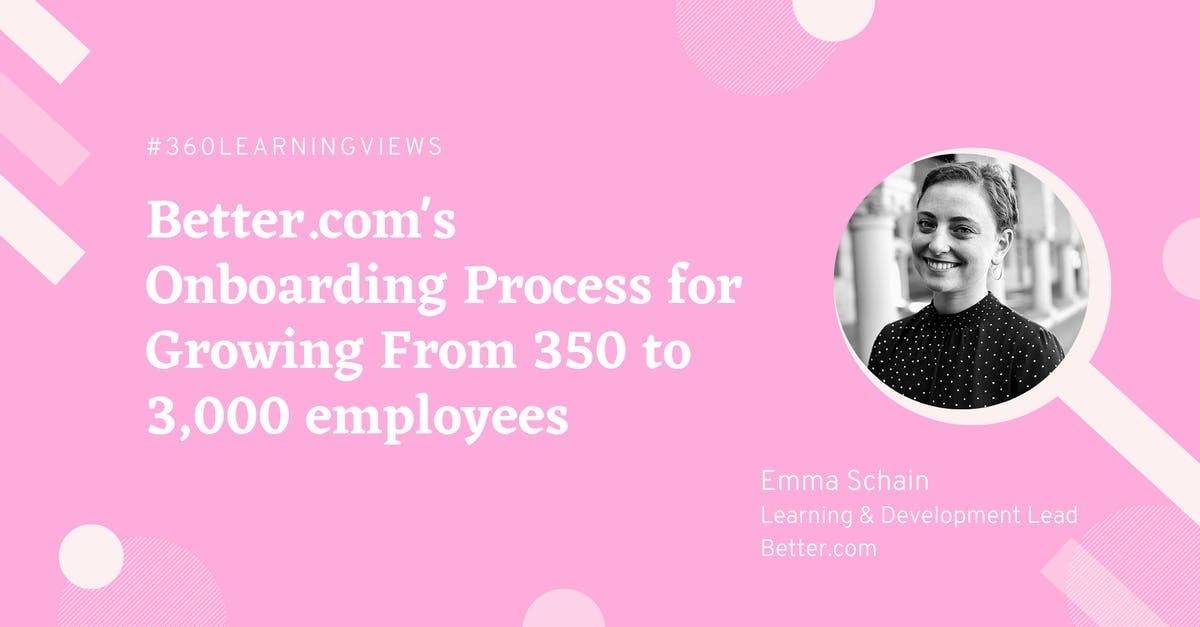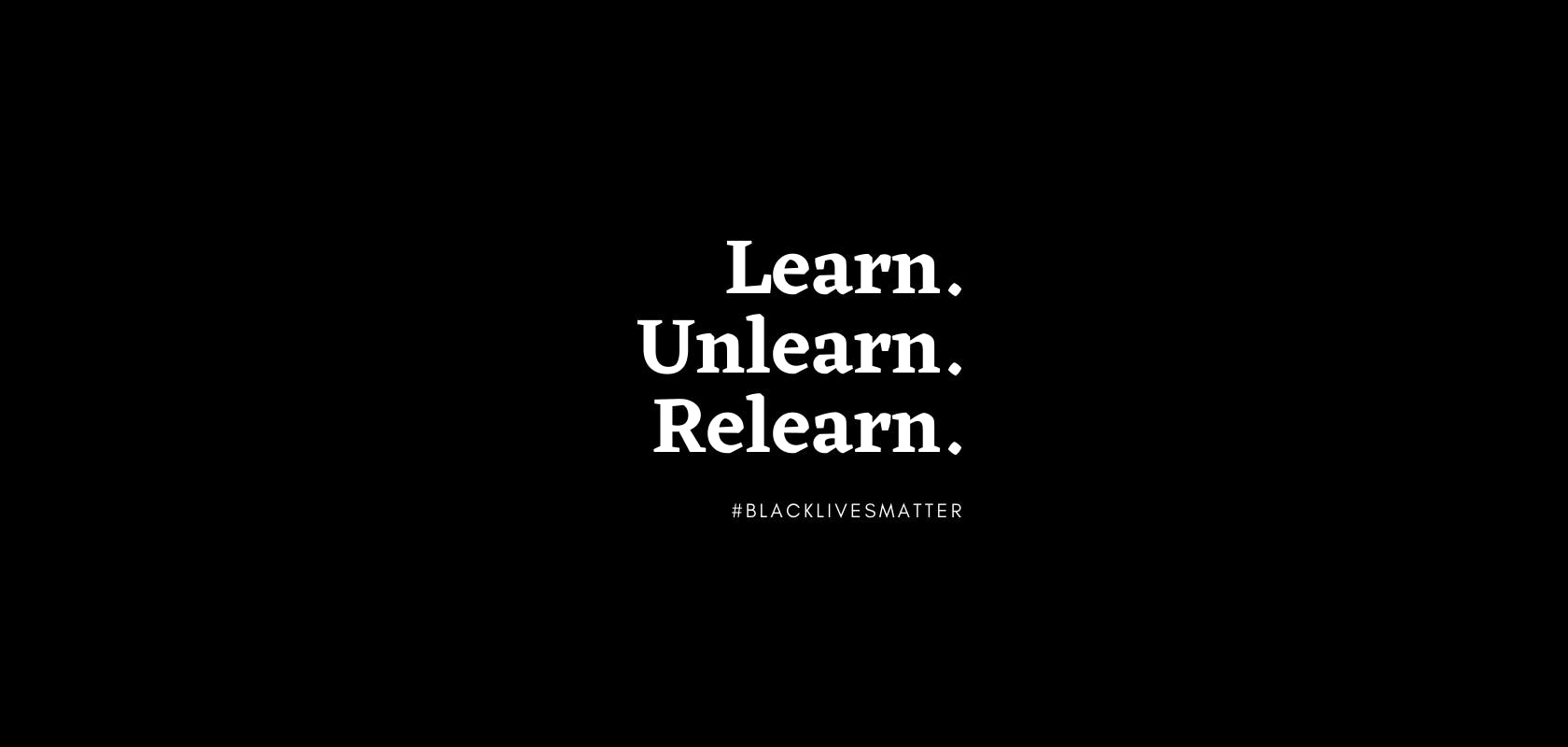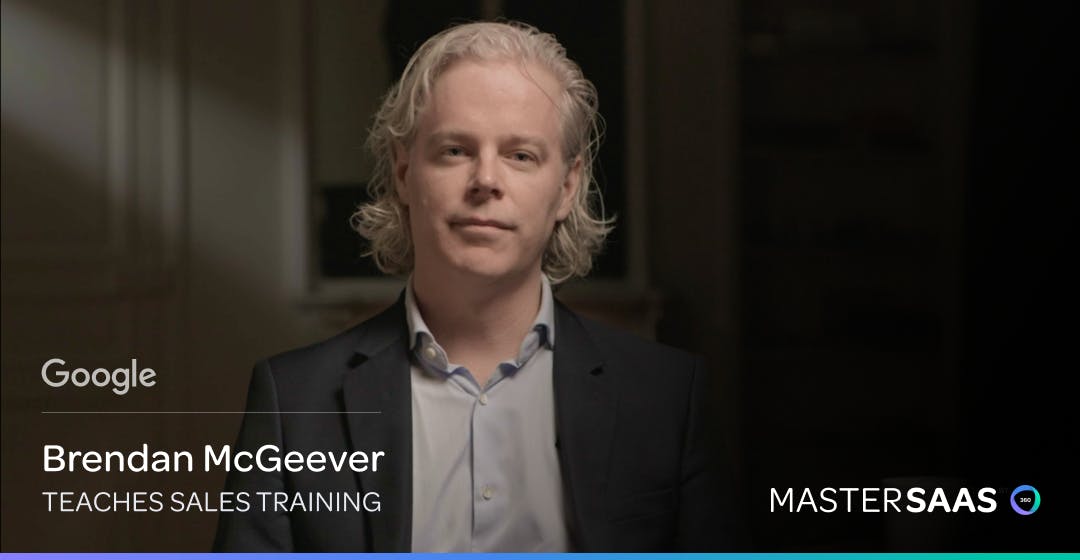Weird year, right?
You don’t need us to tell you. After all, you’ve experienced 2020 first-hand.
It’s been a year of disruption, fatigue, and confusion. At the same time, while the COVID-19 pandemic has placed a lot of strain on businesses around the world, it has also pushed us in a few positive directions.
We’ve seen a greater adoption of flexible working arrangements, and a stronger focus on autonomous workplace culture. We’ve seen resilience in unexpected places, from air carrier workers supporting nurses and doctors, to teachers and students connecting from a distance.
To showcase some of these brighter moments, we’ve pulled together a highlight reel of our 15 favorite 2020 posts from the 360Learning blog. These posts offer practical advice for teams doing their best to keep it together during this strange and tumultuous time.
From a grocery chain using remote training to keep their managers pandemic-ready, through to our L&D experts offering hands-on tips for remote onboarding, these are the moments of challenge, connection, and collaboration that made 2020 so memorable.
Let’s begin.

1: 3 Popular Employee Training Methods That Don’t Work (and What to do Instead)
Even in the face of a global pandemic, L&D leaders need to stay on top of trends in employee training. You need to know which methods can deliver, and which are outdated.
In this post, our CEO Nick Hernandez took on three of the most stubborn and unsuccessful employee training methods out there: instructor-led training, the ‘Netflix for Learning’ approach, and blended learning. These methods are unfocused, ineffective, and hard to scale.
The way forward? Building shareable content from existing institutional knowledge. Instead of adopting learning systems wholesale, businesses should design training approaches that match their strengths and help their teams to collaborate.
And speaking of collaboration…

2: Why Collaborative Learning is the Next Phase of LMS eLearning
Sometimes, an industry needs a jolt to shake things up. The Learning Management System (LMS) market is a great example: for years, analysts like Josh Bersin have been pointing out how clunky and unresponsive most LMS content is. And yet, little has changed.
This article put LMS and LXP tools under the microscope, and pointed to promising new directions in Collaborative Learning. Where traditional tools are slow to adapt to emerging needs, Collaborative Learning is fast, nimble, and peer-driven.
In the world of 2020 where so many of us are working remotely, this makes all the difference. It’s why features like our Reactions capability, as well as our Video Pitch Assessment tool, have helped teams around the world to take big steps forward - even during a difficult year.

3: 6 Steps to a Great Remote Onboarding Process - and What to Avoid
2020 has been hard enough for established teams - but what about L&D managers onboarding new hires from a distance? Pandemic or no pandemic, positions still need to be filled, and people need to be welcomed with the right training, tools, and support.
In this post, we laid out six steps for great remote onboarding:
- Start strong with great pre-boarding
- Make your onboarding process collaborative
- Tailor the onboarding process for each hire
- Use checklists and nudges to keep new hires engaged
- Seek regular feedback - and refine processes as you go
- Measure your success with clear onboarding metrics
In a year with so many distractions, it’s important not to overburden new hires. That’s why we pointed out a few things to avoid with remote onboarding, including information overload, constant communication, and software fatigue.

4: How to Support Frontline Employees in Times of Crisis
In times of uncertainty, it’s the little things that made such a big difference. For supermarket chain WinCo Foods, the COVID-19 crisis highlighted how important it is for communities across the United States to have safe access to food and other household necessities.
In this interview - part of our 360LearningViews series - our Head of Learning Jonah Goldstein spoke with WinCo Foods Talent Development Director Lenn Moorhead-Rosenberg about how to support store managers and frontline employees to offer dependable services during the crisis.
In addition to their compassionate management style, WinCo offers collective coaching resources, peer group support, and training in situational leadership and crisis response. This way, their frontline staff feel recognized and supported - even during stressful moments.

5: The Right Way to do a Training Needs Analysis
Despite the drama, 2020 hasn’t been all doom and gloom. Amidst the pandemic, the move to more flexible working arrangements has also pushed L&D leaders to change the way they assess and address training needs. For many companies, this is long overdue.
In this post, we made a case for turning the tired old model of training needs analysis on its head. Instead of traditional top-down analysis where managers and L&D leaders prescribe course materials, we think it’s time for employees to tell you what they want to learn.
This bottom-up approach is more democratic, and empowers your teams to take charge of their development. In a year where a lot of outdated ideas have been tested and found wanting, it’s great to see so many teams finding better ways to analyze their training needs.

6: Your New Manager Training Isn’t Working—Here Are 4 Ways to Revive It
Sometimes it takes a crisis to highlight an existing problem. Case in point: a lot of companies train their managers entirely the wrong way, with flat PowerPoint presentations, stale video courses, and boring seminars. With COVID-19, these problems went from bad to worse.
As an alternative, this post argued that businesses need to switch their manager training to collaborative online programs focusing on real-world skills and competencies, including organizational change, crisis response planning, and remote support for employee wellbeing.
With 98% of managers saying they’d benefit from more or better training, there are real gains to be made. All you need to do is make manager training a priority, invest in the right tools, and measure your impacts over time.

7: Do You Need an LMS, an LXP, a Talent Suite, or a Learning Platform?
Even for those of us on the inside, learning software acronyms can be tricky. LMS, LEX, LXP, Talent Suite...what’s the difference? And why does it matter?
In this post, CEO Nick shone a spotlight on the real differences between these tools, and what these differences mean for growing businesses. More importantly, he highlighted the broader trends in eLearning and articulated a clear vision for the future of Collaborative Learning.
For businesses in the market for an organizational learning tool, it’s crucial to know what to expect in terms of feature sets, capabilities, and use cases. A lot of companies took their first steps into this area in 2020. For many of them, this guidance is exactly what they needed.

8: Your Guide to Building a Scalable Employee Onboarding Process
In a year like 2020, having the right talent is more important than ever. That’s why building a scalable employee onboarding process is so critical.
In this comprehensive guide, we laid out all the techniques you need to get onboarding right, including great preboarding, a stellar first day, and an even better first month. We laid out our six guiding principles for scalable onboarding, including a focus on personalization, active communication, and peer feedback. For growing companies, this guidance is absolute gold.
And while we’re on the topic of growing companies, let’s turn to a case in point: Better.com.

9: Better.com’s Onboarding Process for Growing from 350 to 3,000 Employees
In a year of global strife and confusion, it’s heartening to see companies continuing to thrive. Online mortgage lender Better.com is an excellent example, with the COVID-19 pandemic doing little to get in the way of their impressive growth and development.
In this addition to our 360LearningViews interview series, Jonah spoke with Learning & Development Lead Emma Schain about remote onboarding during a crisis, tailoring learning to suit specific roles, and her top three lessons from scaling from 350 to 3,000 employees.
Emma’s tips - including having dedicated onboarding facilitators, planning for unexpected developments, and letting people learn in the flow of work - aren’t just helpful during a crisis. They’re crucial for any L&D leader supporting their company to grow and expand.

10: Self-Educating on Black Lives Matter
Sometimes, history resists being captured in a single story. While the COVID-19 pandemic defined 2020, organizations, businesses, and individuals around the world have also been asking themselves what they can do to support the movement for racial justice and equity.
In our post exploring self-education on Black Lives Matter, we put our company mission - to drive impactful learning for change - into practice. We examined our responsibilities to learn, unlearn, and relearn what racial equity means, and what genuine allyship requires of us.
Most importantly, we wanted to offer a platform to amplify voices in the Black community. In that spirit, we quoted the words of Munroe Bergdorf: “What matters is that you’re doing the work to become anti-racist, and holding yourselves and each other accountable.”

11: Introducing MasterSaas: Learn Sales Training with Google, for Free
At 360Learning, we believe a little global disruption shouldn’t get in the way of an opportunity to learn something new. And because we’re huge fans of MasterClass, we thought we’d team up with Google to offer our own spin on things: MasterSaaS.
Helmed by Google’s Head of Sales Training Brendan McGeever, our six-part MasterSaaS series offered an insider’s guide to how the world’s leading tech company trains its sales reps, from creating the right sales training strategy, all the way through to measuring training impact.
The one key difference between the original MasterClass and our nifty homage? Unlike MasterClass, ours is 100% free to view. So, if you’re looking for something to do between cups of hot chocolate, get started by meeting your new coach.

12: 9 Tips to Create a Truly Effective Peer Feedback Loop
Busy L&D teams often overlook one key asset: the expertise and opinions of their fellow employees. In a year where we’ve all been stretched thin, fostering the right peer-to-peer feedback loop is crucial to building a healthy team culture.
This guest post from G2 Content Marketing & SEO Team Lead Bridget Poetker lays out nine helpful tips for L&D leaders to inspire their teams through constructive peer feedback. These tips include proactive communication, using the right tools, and making feedback specific.
Looking ahead to 2021, this kind of feedback loop will continue to be critical for all kinds of businesses around the world. It’s a core part of Collaborative Learning in practice, and it helps teams and organizations to solve common problems and improve over time.

13: How AlphaSights Built a Scalable Onboarding Program with 99% Satisfaction Rates
In precarious times, some people might be tempted to settle for average performance. As industry research platform AlphaSights proves, this doesn’t have to be the case.
As AlphaSights has grown rapidly around the world, scaling its employee development has become more crucial than ever before. Even before COVID-19, the company’s Professional Development team was looking for ways to transform their in-person training portfolio.
With the help of 360Learning, AlphaSights digitized its training content and enlisted subject-matter experts to bring their onboarding program to life. This switch to digital learning helped drive 99% satisfaction rates for new joiners, enabling people to learn asynchronously and improve training content over time.

14: 3 Data-Based Ways to Prove Training ROI (+ Free Training ROI Calculator)
All the disruption of 2020 has placed a new emphasis on L&D leaders and managers to prove the value of their training. Today, every dollar spent needs to be justified, and demonstrating the ROI of your internal training is key. But what if numbers aren't your strong suit?
Because we’re such a helpful bunch, we offered three ways for L&D teams to put a dollar amount on their training programs. In this post, we outlined the Kirkpatrick Model of training evaluation, the Phillips Model of learning evaluation, and Briknerhoff’s Success Case Method.
And to be extra nice, we included a free ready-to-use ROI calculator to help our readers get started putting the numbers together. If you’d like to show just how useful your training programs are, this is a great place to start.

15: 32 Onboarding Templates and Checklists to Design Great New-Hire Experiences
To finish up our 2020 highlights reel, we thought we’d cap things off with a few other helpful templates and checklists to help you roll out the welcome mat for your new hires. 32 templates and checklists, to be exact.
You already know how high the stakes can be for new starters: 20% of employee turnover happens within the first 45 days, and the cost to the company of just one of these resignations can range from 50% to 200% of an employee’s annual salary. You’re already dealing with a global pandemic - the last thing you need is more drama.
In this post, you’ll find our extended new employee checklist, a free 30/60/90 day onboarding template, checklists for incoming managers, and plenty of other goodies. Make sure you’re ready for whatever 2021 has in store - have a read and see what you’re missing.
Conclusion: Learn from 2020 - and be ready for 2021
At 360Learning, we believe inspiration can come from anywhere. Even the toughest times can be a source of growth, renewal, and strength. That’s certainly been the case for us in 2020.
We hope our blog has offered you a few bright moments during an otherwise bleak year. And because times of stress and disruption have a lot to teach us, we hope you’ve noted down a few ideas for how to make 2021 a whole lot better for you and your team.
Take care, rest up, and we’ll see you in 2021.
Want more L&D insights in the coming year? You can subscribe (below 👇) to our weekly newsletter to receive our latest posts in your inbox.


